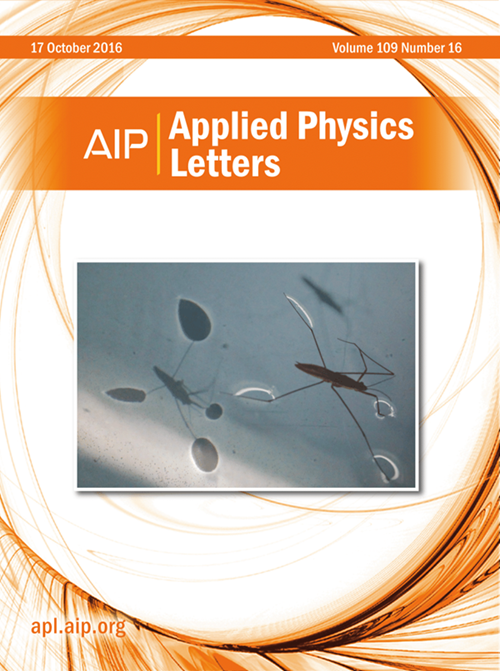扫描近场微波显微镜用绝缘尖端:在范德华半导体成像中的应用
IF 3.6
2区 物理与天体物理
Q2 PHYSICS, APPLIED
引用次数: 0
摘要
扫描非线性介电显微镜是一种扫描近场微波显微镜(SNMM)技术,通过检测导电针尖和样品之间的电容变化,有效地用于表征半导体材料和器件。然而,对于没有表面绝缘层的半导体,无论是天然氧化物还是有意制造的氧化物,传统的导电尖端都不适合,因为尖端与样品的直接接触会引起电荷注入,阻碍了半导体固有特性的成像,特别是显性载流子浓度分布。为了解决这一限制,我们提出了一种绝缘尖端,通过在导电尖端上沉积薄绝缘层来制备。我们证明了这种绝缘尖端能够在防止电荷注入的同时成像半导体的固有特性。我们的方法可以扩展到其他SNMM技术,从而扩大其在半导体材料和器件表征中的应用。本文章由计算机程序翻译,如有差异,请以英文原文为准。
Insulating tip for scanning near-field microwave microscopes: Application to van der Waals semiconductor imaging
Scanning nonlinear dielectric microscopy, a scanning near-field microwave microscopy (SNMM) technique, has been effectively used for characterizing semiconductor materials and devices by detecting variations in capacitance between a conductive tip and sample. However, for semiconductors without surface insulating layers, either native oxides or intentionally fabricated ones, conventional conductive tips are unsuitable because direct tip–sample contact induces charge injection, hampering the imaging of intrinsic semiconductor properties, particularly dominant carrier concentration distributions. To address this limitation, we propose an insulating tip, prepared by depositing a thin insulating layer on a conductive tip. We demonstrate that this insulating tip enables the imaging of intrinsic semiconductor properties while preventing charge injection. Our approach can be extended to other SNMM techniques, thereby broadening their applications in semiconductor material and device characterization.
求助全文
通过发布文献求助,成功后即可免费获取论文全文。
去求助
来源期刊

Applied Physics Letters
物理-物理:应用
CiteScore
6.40
自引率
10.00%
发文量
1821
审稿时长
1.6 months
期刊介绍:
Applied Physics Letters (APL) features concise, up-to-date reports on significant new findings in applied physics. Emphasizing rapid dissemination of key data and new physical insights, APL offers prompt publication of new experimental and theoretical papers reporting applications of physics phenomena to all branches of science, engineering, and modern technology.
In addition to regular articles, the journal also publishes invited Fast Track, Perspectives, and in-depth Editorials which report on cutting-edge areas in applied physics.
APL Perspectives are forward-looking invited letters which highlight recent developments or discoveries. Emphasis is placed on very recent developments, potentially disruptive technologies, open questions and possible solutions. They also include a mini-roadmap detailing where the community should direct efforts in order for the phenomena to be viable for application and the challenges associated with meeting that performance threshold. Perspectives are characterized by personal viewpoints and opinions of recognized experts in the field.
Fast Track articles are invited original research articles that report results that are particularly novel and important or provide a significant advancement in an emerging field. Because of the urgency and scientific importance of the work, the peer review process is accelerated. If, during the review process, it becomes apparent that the paper does not meet the Fast Track criterion, it is returned to a normal track.
 求助内容:
求助内容: 应助结果提醒方式:
应助结果提醒方式:


